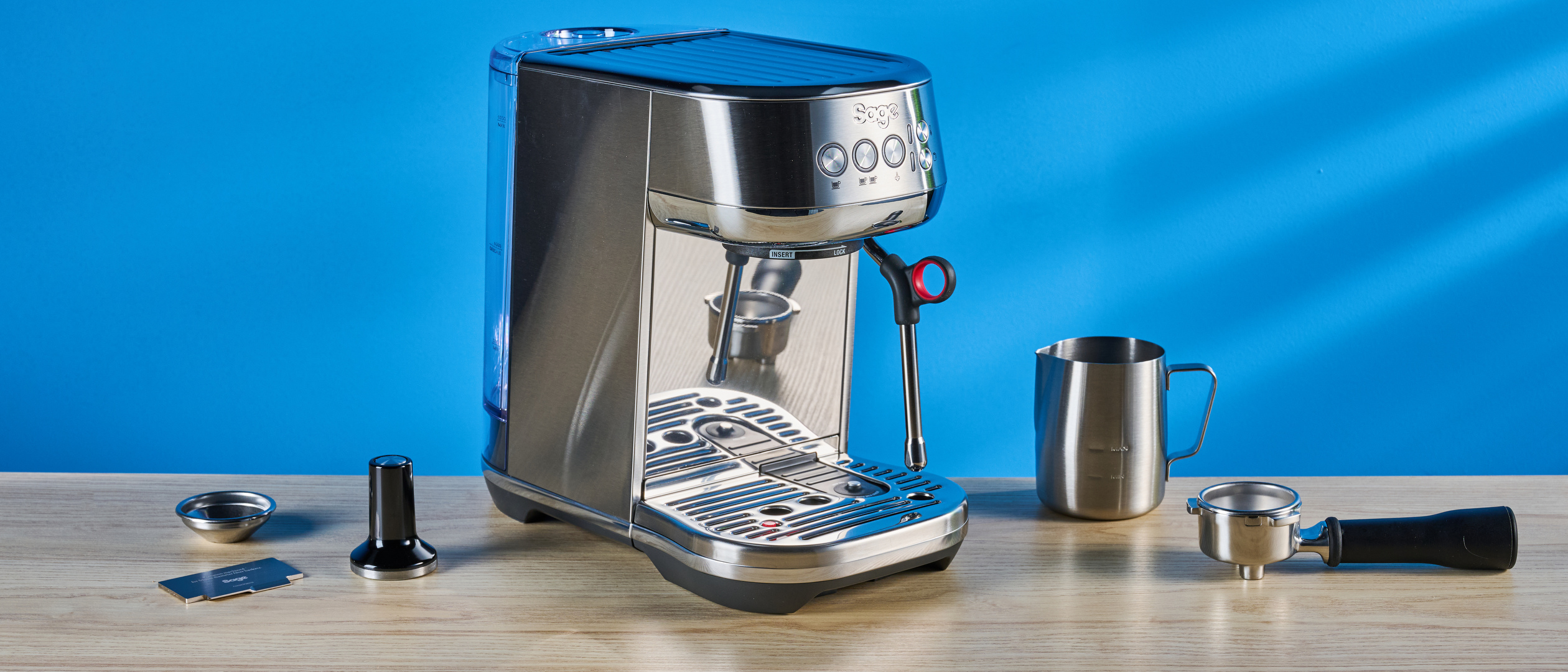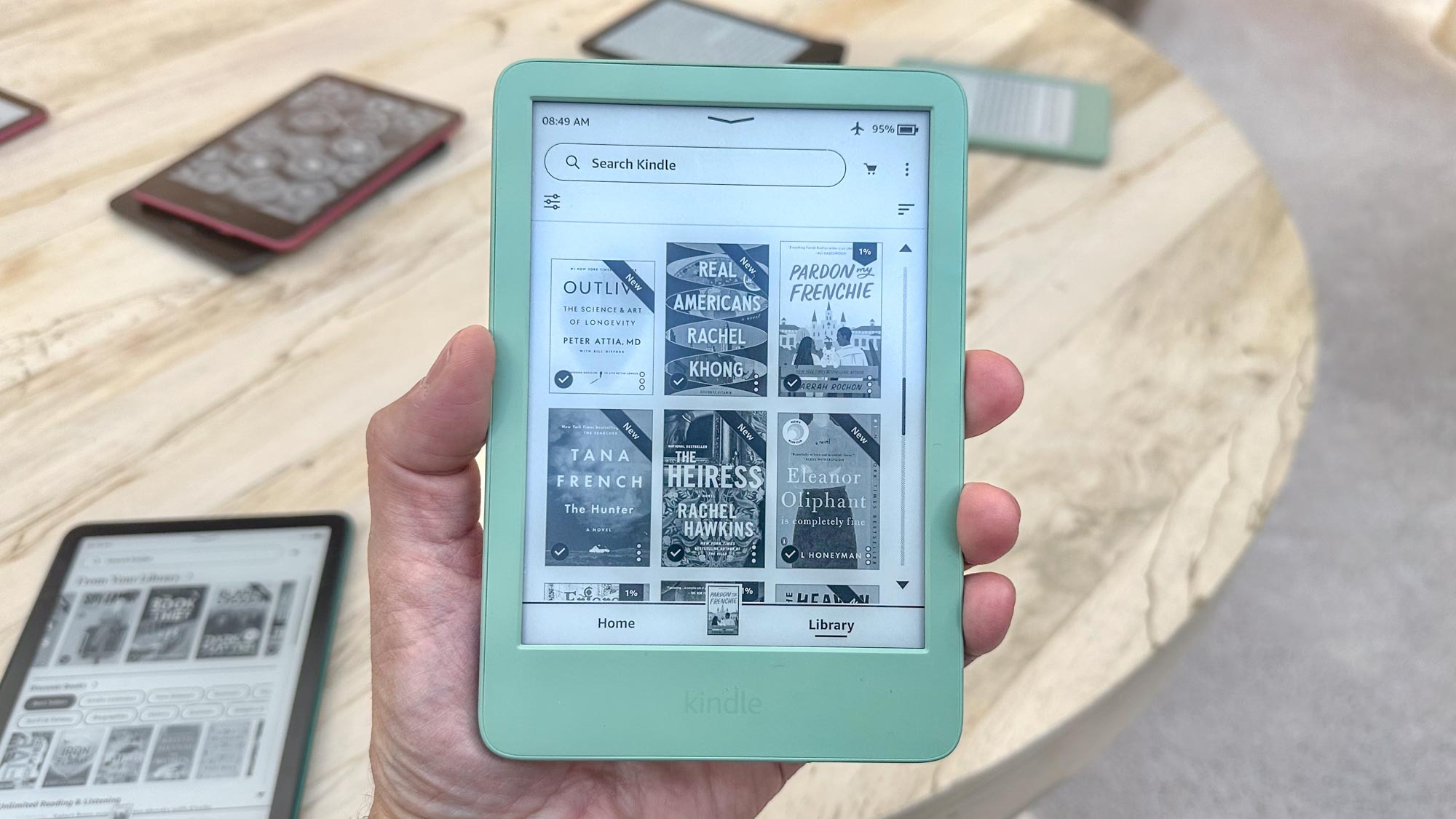Tom's Guide Verdict
If you want delicious, high-quality espresso and well-steamed milk, then the Breville/Sage Bambino Plus is the right machine for you. It’s beyond easy to master right out of the box, making it great for beginners. And at just 7 inches wide, it’s ideal for enthusiasts with compact coffee stations, too.
Pros
- +
Makes great espresso
- +
Easy to use right out of the box
- +
Steaming is easy, and automatic function actually works
- +
Super compact and looks an absolute treat
- +
Auto-purge function
Cons
- -
Pricey for an entry-level machine
- -
Group handle can be fiddly
- -
Limited steam wand movement
Why you can trust Tom's Guide
If you’re an espresso purist, look away now. This machine is probably not for you. But if you’re the kind of person who just wants fresh, delicious, properly-made espresso, and you aren’t worried too much about the craft of it all, then oh boy, is the Breville Bambino Plus right up your street.
While I doubt this machine would impress experienced espresso connoisseurs (a dual-boiler is better for that), the Bambino Plus is hands-down one of the best espresso machines for beginners. It’s breathtakingly easy to use — no calculating ratios or counting seconds here — right out of the box.
I would recommend this machine for those who want a reliable, easy-to-use machine at home, or those just getting into coffee as a hobby. If you’re a more experienced user who wants the creature comforts of a more powerful, perhaps dual-boiler machine, this is not the product for you. Although its compact size may well suit advanced users with cramped kitchens.
However, the Breville/Sage Bambino Plus is the reigning champ of entry-level espresso machines for a reason. I’ll discuss everything in depth in this Breville/Sage Bambino Plus Espresso Machine review.
Breville Bambino Plus review: Cheat sheet
- Who is it for? Beginners and new enthusiasts who are just getting into ‘proper’ espresso
- What does it do well? It’s a stress-free way to make fresh espresso and steam milk competently at home
- What are its weaknesses? Lacks the hardcore features many experienced users want
- What should you use it for? Experimenting with coffee, getting to grips with making espresso yourself, and learning about the craft
Breville Bambino Plus review: Specs
Breville Bambino Plus review: Price & availability
In the U.S., the Breville Bambino Plus is $499 at Amazon, but it’s often on sale for just $399. In my opinion, $399 is a much better deal, so I’d wait for it to go on sale (it’s on sale as I write this!).
In the U.K., there’s a name change and a price change. Breville goes by Sage across the pond, so it’s the Sage Bambino Plus, available for £399 from Sage. But, similarly, it’s often on sale for around £349.
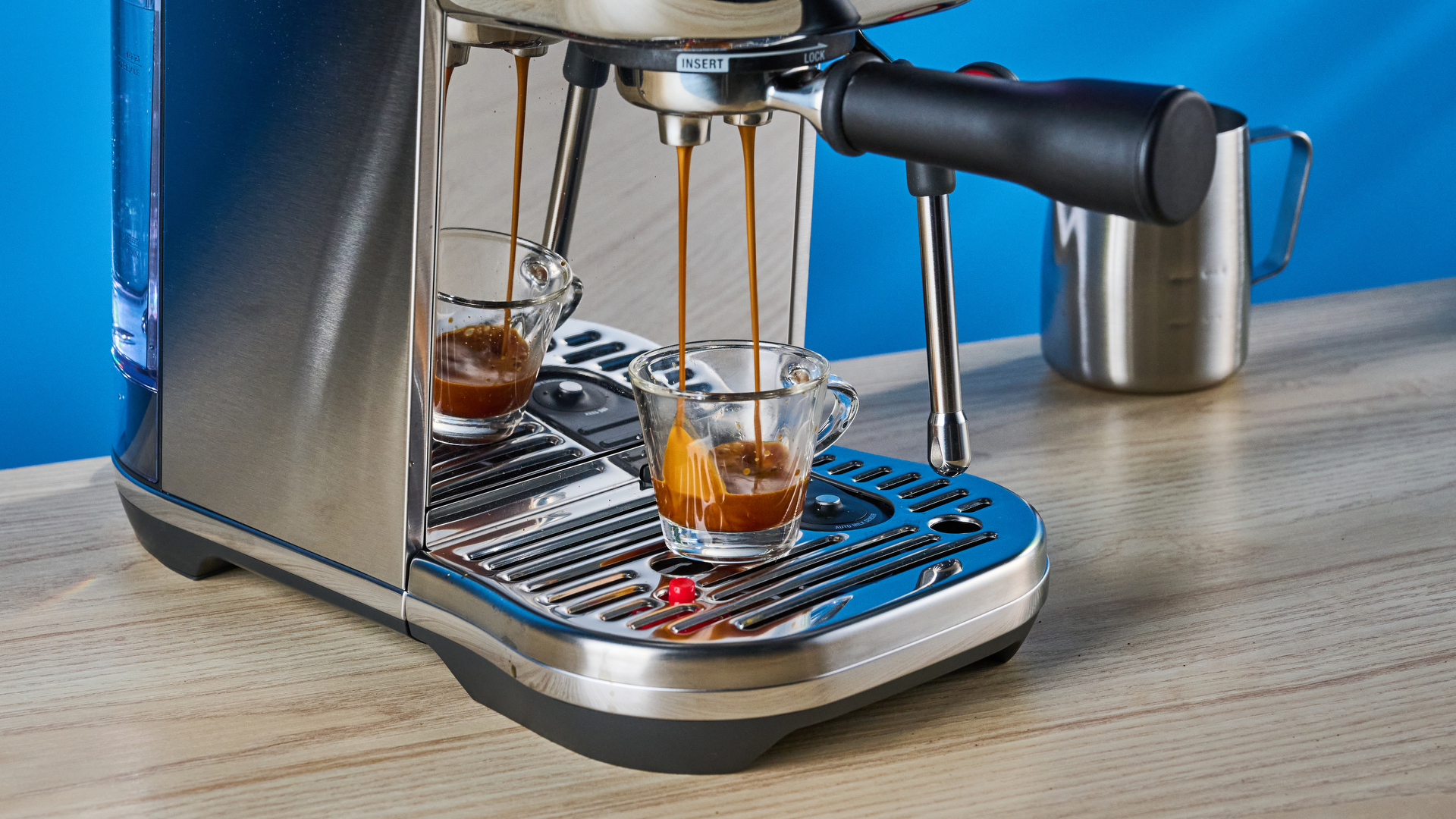
Given that this is an entry-level espresso machine, I’d expect to see a lower price than this. Other entry-level machines like the Casabrews 3700 start as low as just $129. The De’Longhi Dedica Maestro is just $299 for around the same specs as the Bambino Plus.
Get instant access to breaking news, the hottest reviews, great deals and helpful tips.
Even though I think $499 is pretty pricey for an espresso machine of this caliber, the Bambino Plus does have an automatic milk steaming mode that works (and that’s the key here), which could entice some users away from alternative beginner machines. So, if you want an auto milk function, the Bambino Plus has taken pole position here.
Breville Bambino Plus review: Design
One of the most appealing aspects of the Bambino Plus is its design. This is the ideal espresso machine for someone who wants a compact yet highly capable product. If you don’t have space for something like the Diletta Mio, De’Longhi La Specialista Opera or the Breville Barista Express, the Bambino Plus could be a decent compromise.
At just 3.1 pounds and 7.6 inches wide, the Bambino Plus would have no problem fitting on most countertops. This is the ideal choice for those short on space who don’t want to sacrifice quality — but I will mention that the exterior metal is easily tarnished.
I will also note that the machine vibrates a lot during extraction and steaming, so I wouldn’t recommend keeping the spare portafilters and accessories on top of the machine, and also keep your mug well-balanced so it doesn't vibrate off the drip tray.
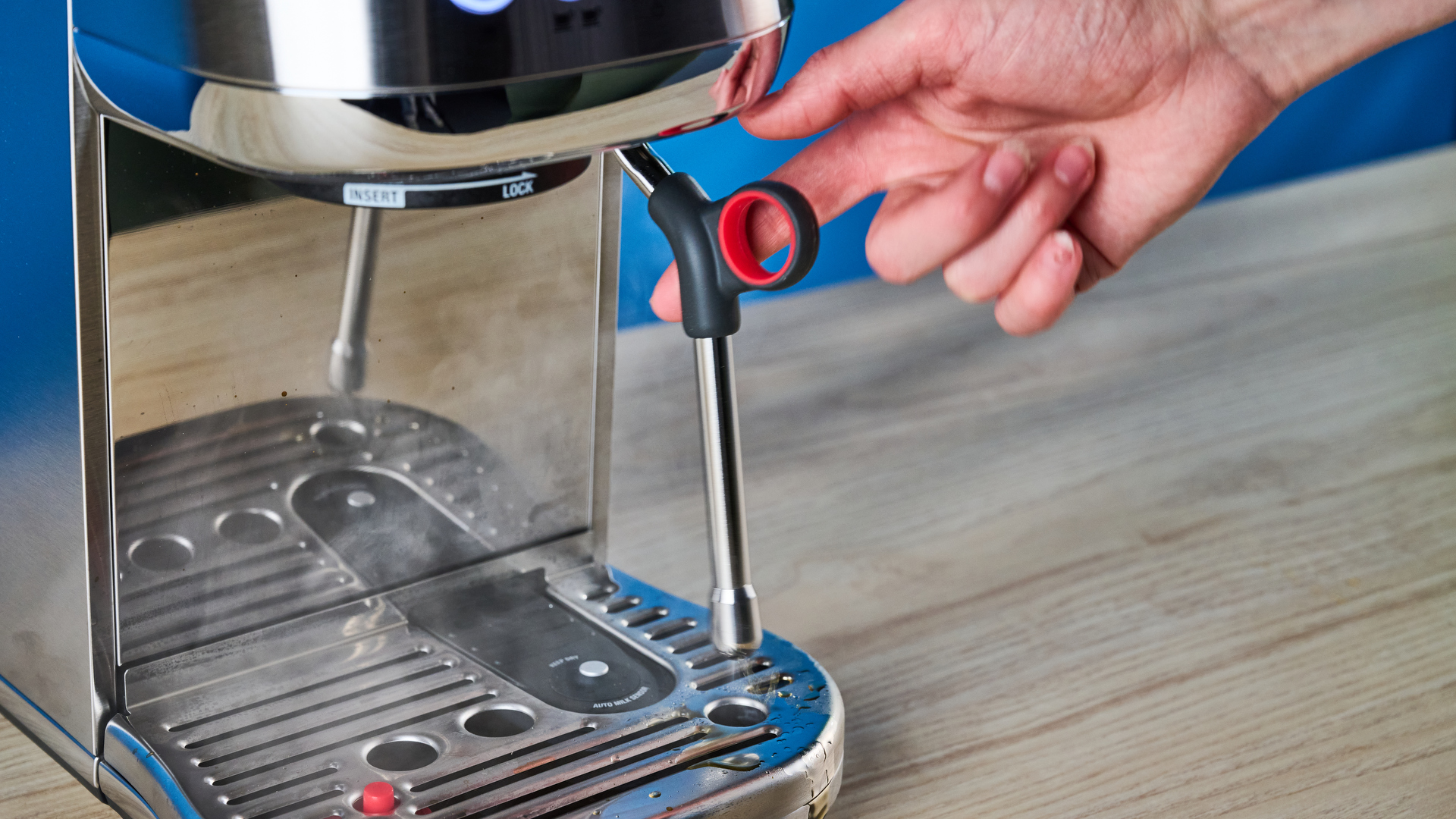
The drip tray itself is very easy to clean. It has a plastic bottom and metal top. Simply pull it out and empty it through the handy gap on the top left. It’s very small, so I’d recommend emptying it out after every usage. There’s a little red buoy that pops up when the tray is full, but I found that this was quite delayed with alerts, so I’d just empty it after every use to prevent leaks.
My biggest issue with the Bambino Plus is the janky group head. It’s actually really hard to get the group handle and portafilter into the group head. You have to grip onto the machine with your other hand for some resistance, and even then it’s still tricky. This is the only major downside to the machine, so be aware of that if you decide to get it.
Breville Bambino Plus review: Espresso
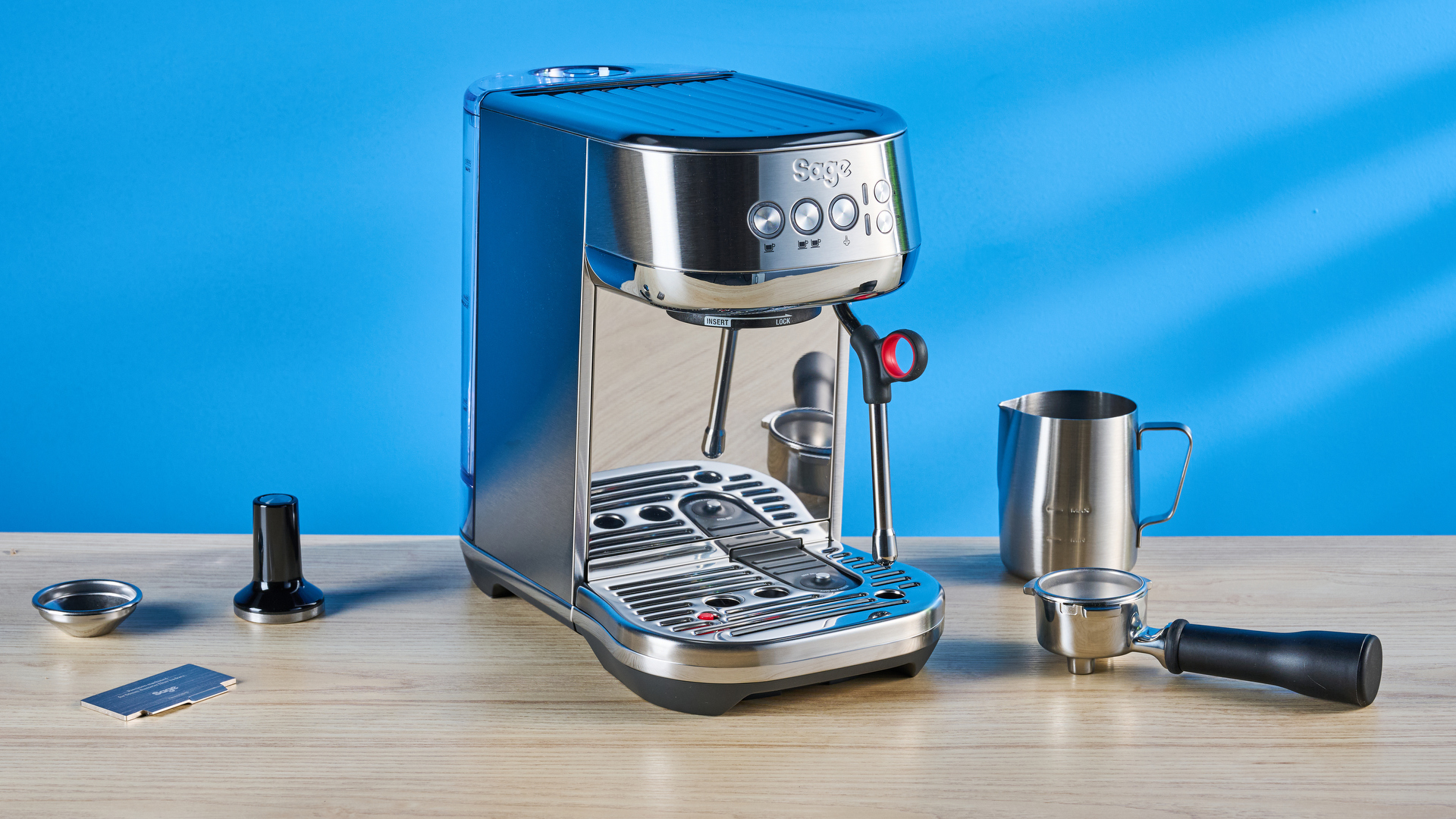
The Bambino Plus uses a 54mm portafilter. I wish Breville/Sage had built the Bambino Plus with a 58mm portafilter, as the larger size is the commercial standard. Buying accessories and parts is a little trickier with 54mm portafilters.
The proprietary ThermoJet system heats up pretty quickly — less than 10 seconds from cold (as in, not used for at least 8 hours) and around 4 seconds on standby. I always run a little water through the machine before slotting my group handle in just to make sure it’s hot enough.
Obviously, ThermoJet will never be as ‘good’ as a dual-boiler system like the Breville Dual Boiler ($1,599), but for those short on both space or budget, the Bambino Plus is an incredible option. The difference between more common thermoblock systems and ThermoJet is that thermoblock heats water in a block, and ThermoJet heats water as it passes through a heating element for faster heat up time.
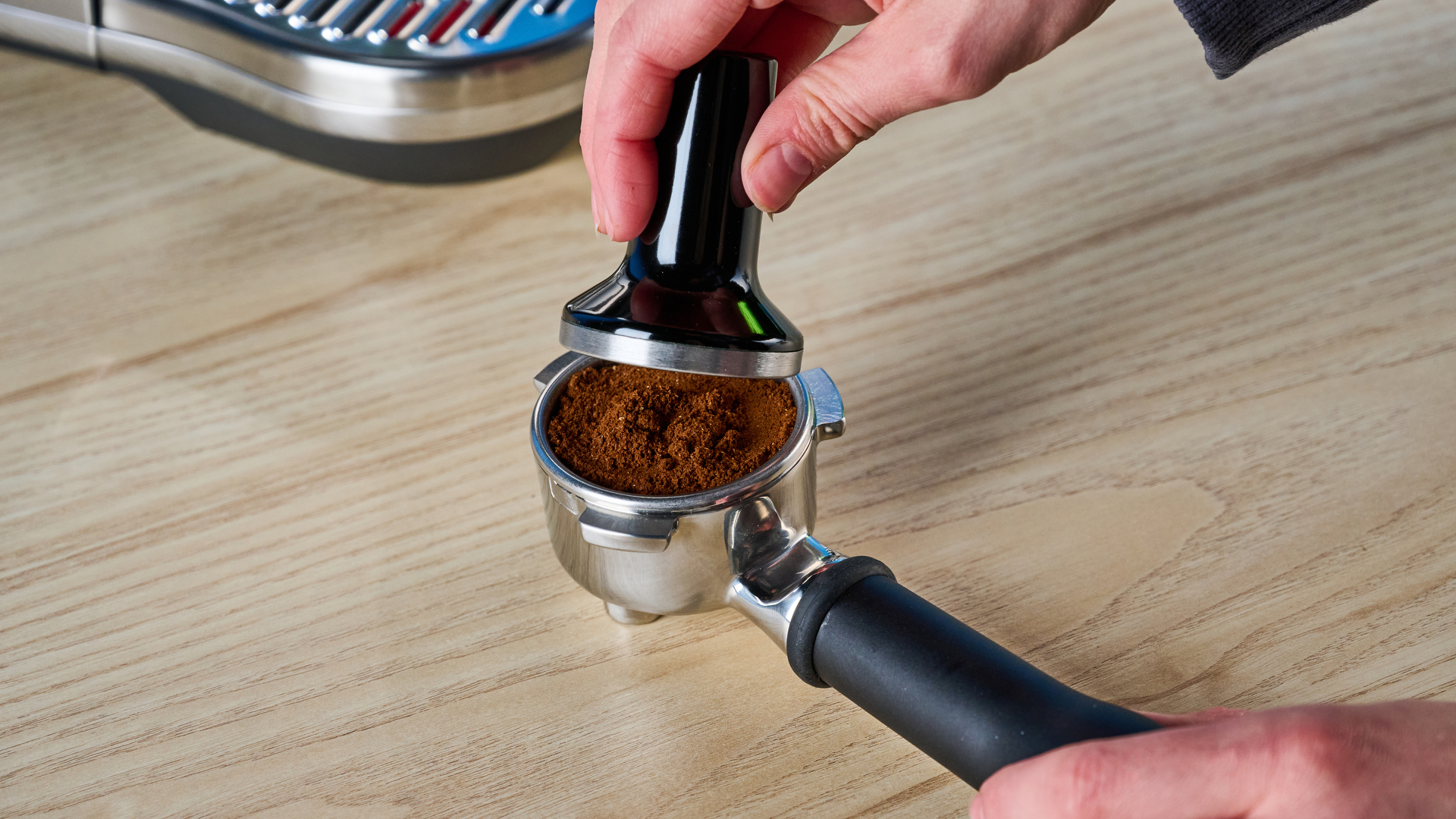
The Bambino Plus can be both manual and automatic. The machine is set up to extract on auto mode out of the box, which means it doses a set amount of water through coffee grounds regardless of coffee dose. Breville says it runs 30ml on single and 60ml on double, but in reality, I found this produced around 32-35g of espresso.
It’s easy to change this: simply hold down the shot buttons and let the water run for your desired time. The machine will then remember that time for future extraction. I found my perfect extraction time was 25 seconds for my light roasted coffee, but this will change based on the beans and your personal preference.
To turn back to auto mode, simply reset the machine using programming commands outlined in the user manual. I found these commands easy to use, much simpler than the Smeg Espresso machine.
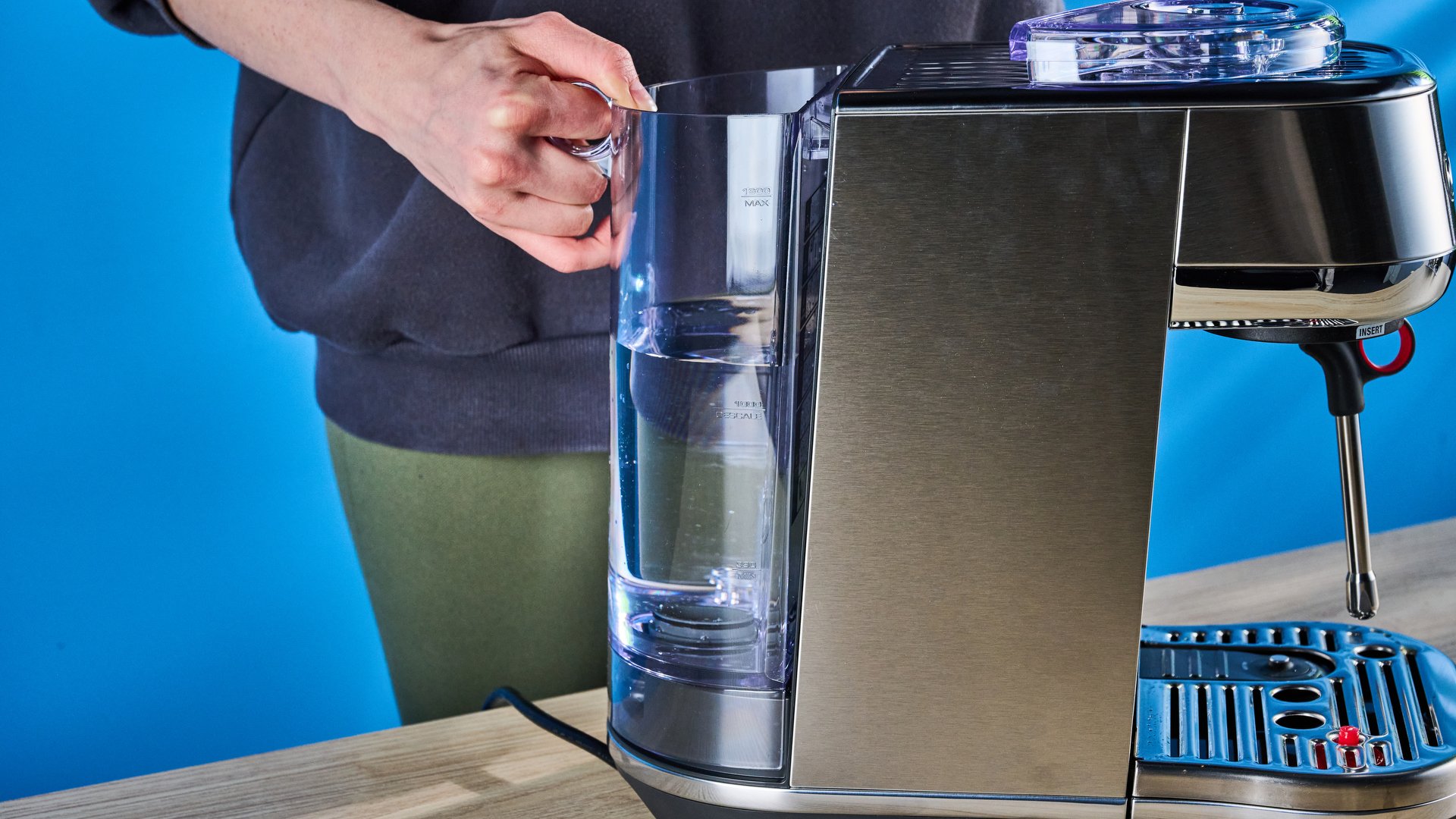
I will note that the Breville (Sage) Dose Control Pro cannot grind fine enough to reach 25-28 seconds extraction time on auto. Even when I adjusted the inner burr, it only ground fine enough to extract in 15 seconds. Don’t get me wrong, those shots still tasted good, but I would recommend a more robust grinder like the Comandante C40 MK4 and the Eureka Mignon Specialita.
With the Comandante and the Eureka grinders, I was able to extract 36.1g of espresso in 25 seconds on auto mode. Here’s a picture of the espresso.
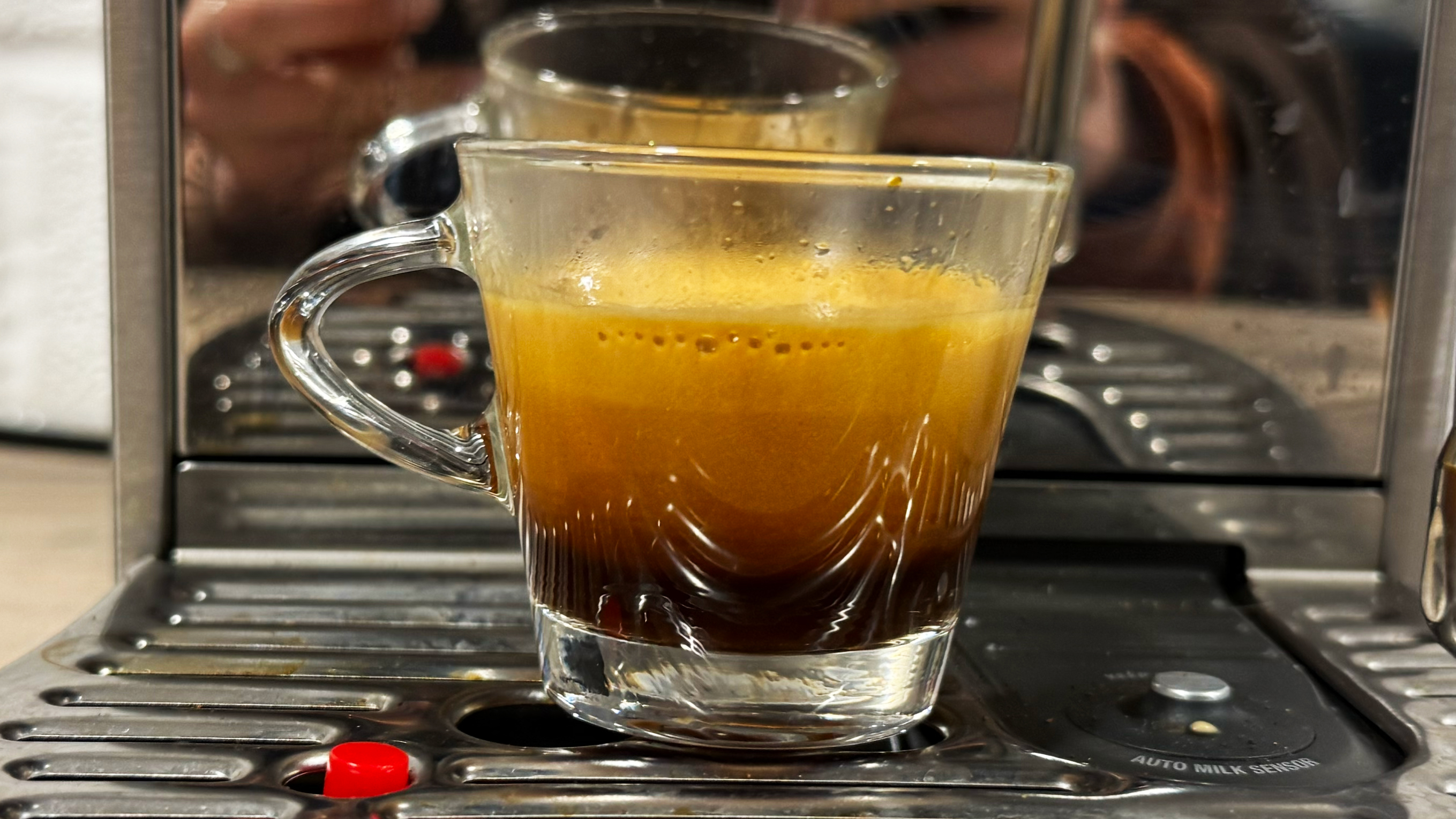
As you can see, the espresso has delicious thick crema and you can see the shot’s layers. It also tasted divine. The black heart is only that large because I couldn't grab my phone quickly enough for an instant picture.
This took a decent amount of dialing in the first time around, as you’ll find is often the case when you start using an unfamiliar machine, so I’d recommend you dedicate some time to figuring out the best dosage, grind, and beans for your taste.
What you like will be different to me. There is no one way to pull espresso. The timings and dosage will depend on grind size, coffee roast, heck, even water hardness. This is why I much prefer making espresso at home as opposed to patronizing cafes now.
The bottom line is this: the Bambino Plus makes perfect espresso that tastes utterly divine. Yes, you’ll need to experiment to find the optimal extraction time, perfect grind, and water dosage, but this is the case with any espresso machine worth its salt.
Breville Bambino Plus review: Milk
The Bambino Plus has an auto milk steaming function, which some people may love, some people may loathe. The good news is that you don’t have to use the auto feature — you’re welcome to manually steam milk.
The auto function relies on a small metal-topped button on top of the drip tray. To use the auto function, all I had to do was fill the jug, insert the steam wand, and press the steam button. It took 1 minute and 10 seconds to steam 200ml of milk.
Here’s a photo of the latte art I managed to pour with the auto-steamed milk.

The eagle-eyed amongst you will notice that the milk is a little thicker than ideal. I’d say this milk texture is more akin to a cappuccino than a flat white or latte, but it still pours smoothly enough to create latte art.
Although I appreciate this feature, I’m more of a do-it-yourself barista, so I tended to gravitate towards the manual steaming. Using the Bambino Plus’s steam wand is mostly pain-free, but one thing about it really bothered me.
The steam wand is quite static: you can only move it up and down. It doesn’t go out to the side, so you have to steam milk at a prescribed angle. Due to this lack of movement, I could only steam milk without the group handle in the group head.
Manual steaming takes around the same time as auto steaming — just a minute or so, depending on how aggressively you tend to steam milk, or how hot you like it. The heat-up time between shots and milk is just a couple of seconds; I was able to use the steam wand almost immediately after pulling shots.
Here’s a photograph of my manually-steamed milk.

Yes, I know the art is pretty poor here, but that’s a result of my under-filling the jug rather than the machine itself. The jug is actually very helpful when pouring milk.
I absolutely love the Breville/Sage milk jug. Unlike other brand milk jugs (I’m thinking De’Longhi and KitchenAid), the spout is super narrow and angled just right. This makes pouring latte art much, much easier. If you’re struggling with latte art, it might not be you — it might be your jug.
Here’s what I mean.
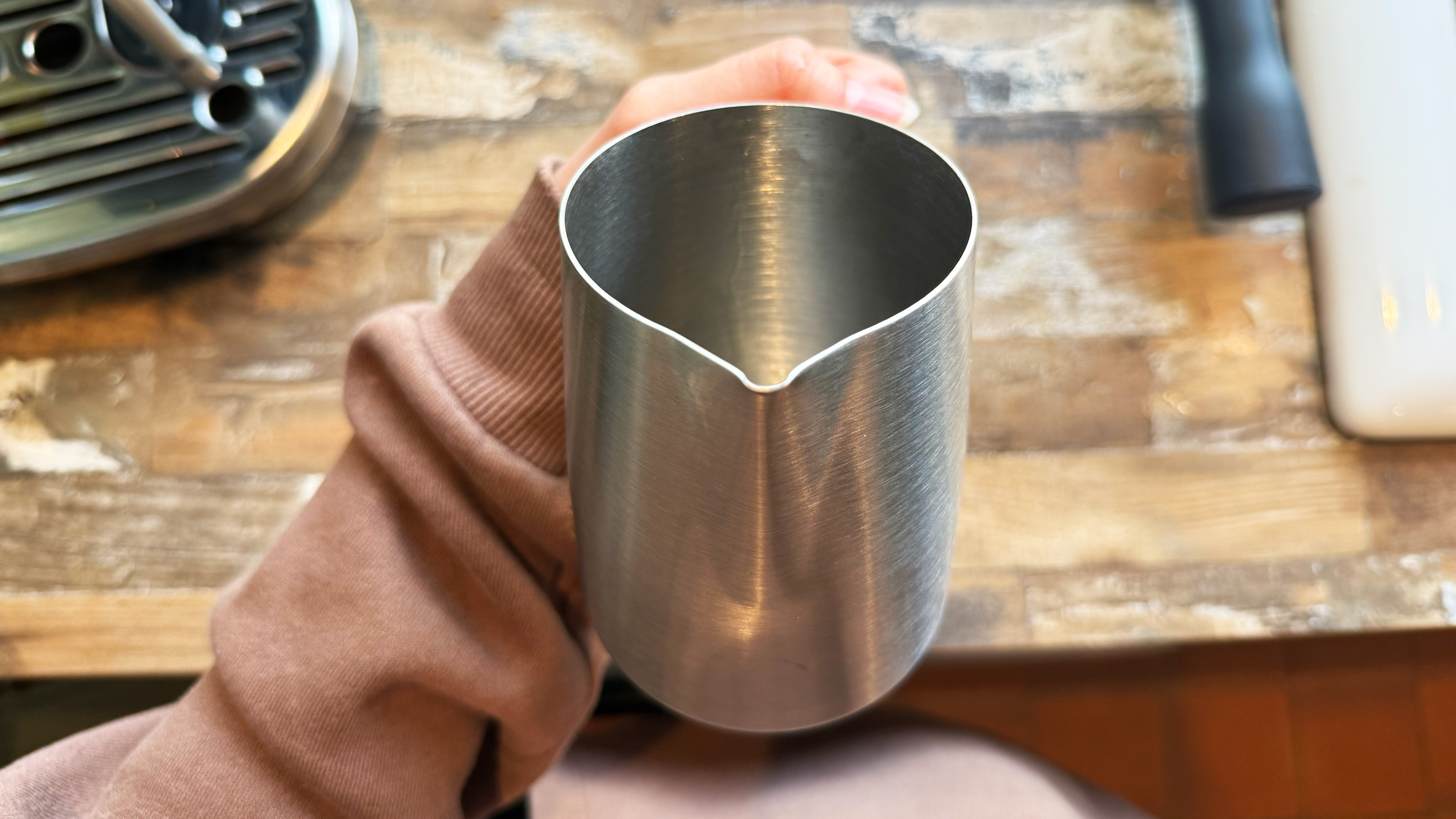
As you can see, the spout is moulded in a sharpish point, so it controls the flow of milk and creates a narrower stream for more defined art.
As far as practicality goes, the Bambino Plus has a fantastic auto-purge function, too. After every milk steam, the wand will automatically purge itself once you return the wand to its original position. This is great because it’s one of the most important steps that a lot of people forget.
Breville Bambino Plus review: Storage & maintenance
As discussed in the ‘Design’ section, the Bambino Plus is very compact and ideal for smaller kitchens. This fit perfectly on my kitchen countertop and I had no issues moving it around as and when I needed.
If you’ve ever cleaned an espresso machine before, the Bambino Plus is basically identical to that. The stainless steel exterior tarnishes quite easily, so could do with a gentle wipedown or polish after every use. As mentioned before, the drip tray is quite small, so be wary of it overflowing.
Thankfully, Breville/Sage provides you with cleaning tablets. You can purchase extra cleaning tablets on Breville/Sage’s website for $14, and descaling solution for $14.
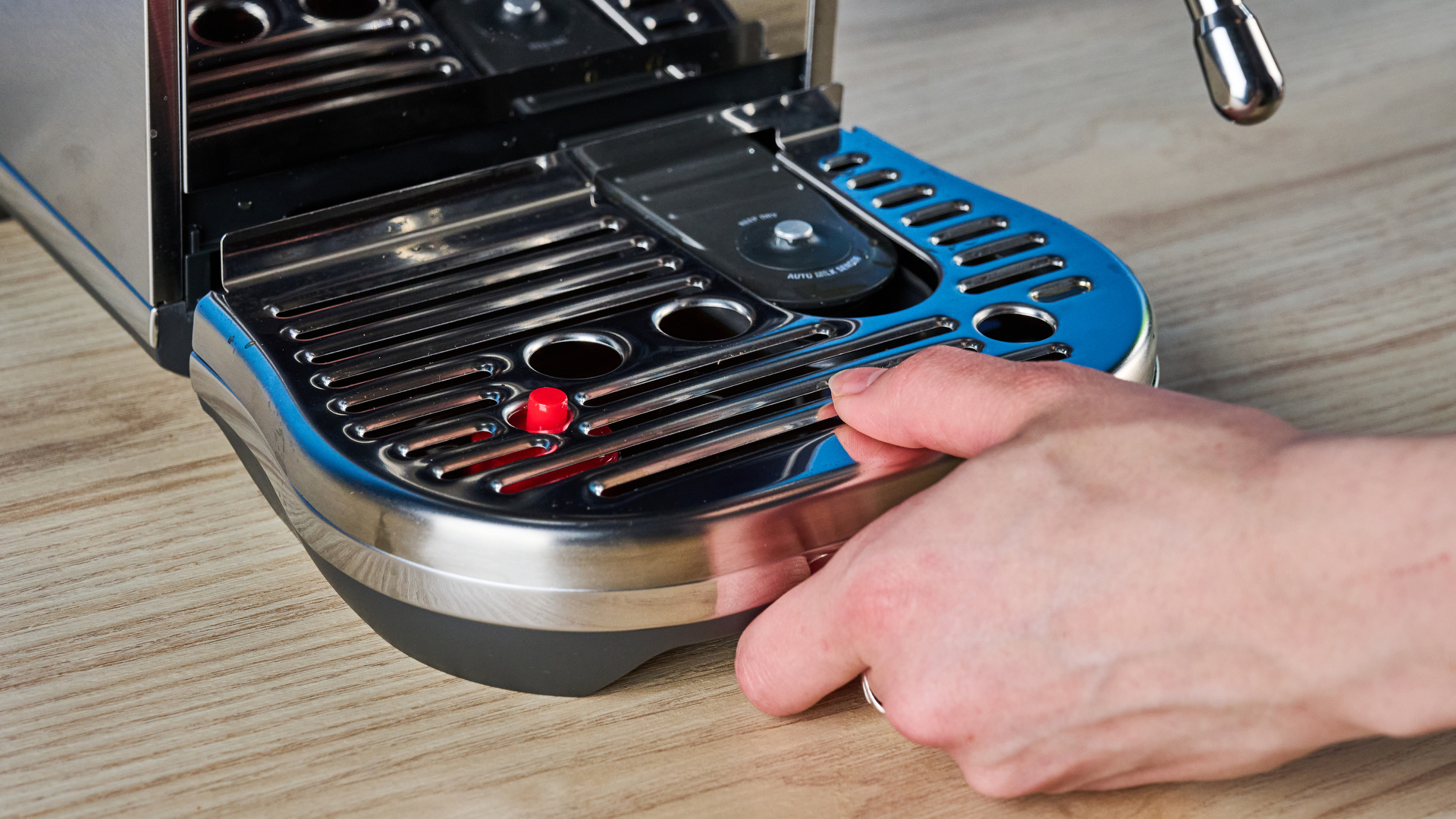
To prevent excess limescale and bitter flavors in your coffee, you can use Breville’s ClaroSwiss water filter. It’s $16 and needs replacing every 90 days or 40 liters of water — whichever comes first. There’s a water filter holder in the Bambino Plus’s box that slots perfectly into the water tank.
Something very unique to Breville is the temperature-displaying milk jug, which is $24 direct from Breville. This jug basically shows the live temperature so you don’t burn your milk — this is a must-have for beginner baristas.
Breville Bambino Plus review: How does it compare?
Seeing as this is an entry-level machine, it’s more comparable to something like the Casabrews 3700 than the Breville Barista Express.
If you’re after an entry-level or compact machine that is actually really good and brews delicious espresso, then look no further than the Bambino Plus. The machine has a PID (temperature control) to ensure the coffee doesn’t get burnt, plus a high 15-bar maximum pressure, but it isn’t as robust as a larger machine might be.
If you’re super serious about espresso, I would recommend a dual-boiler machine, as these allow you to brew espresso and steam milk at the same time, so no waiting around or downtime. The Smeg EMC02 actually has a triple-thermoblock system for simultaneous milk and espresso preparation, but is very pricey.
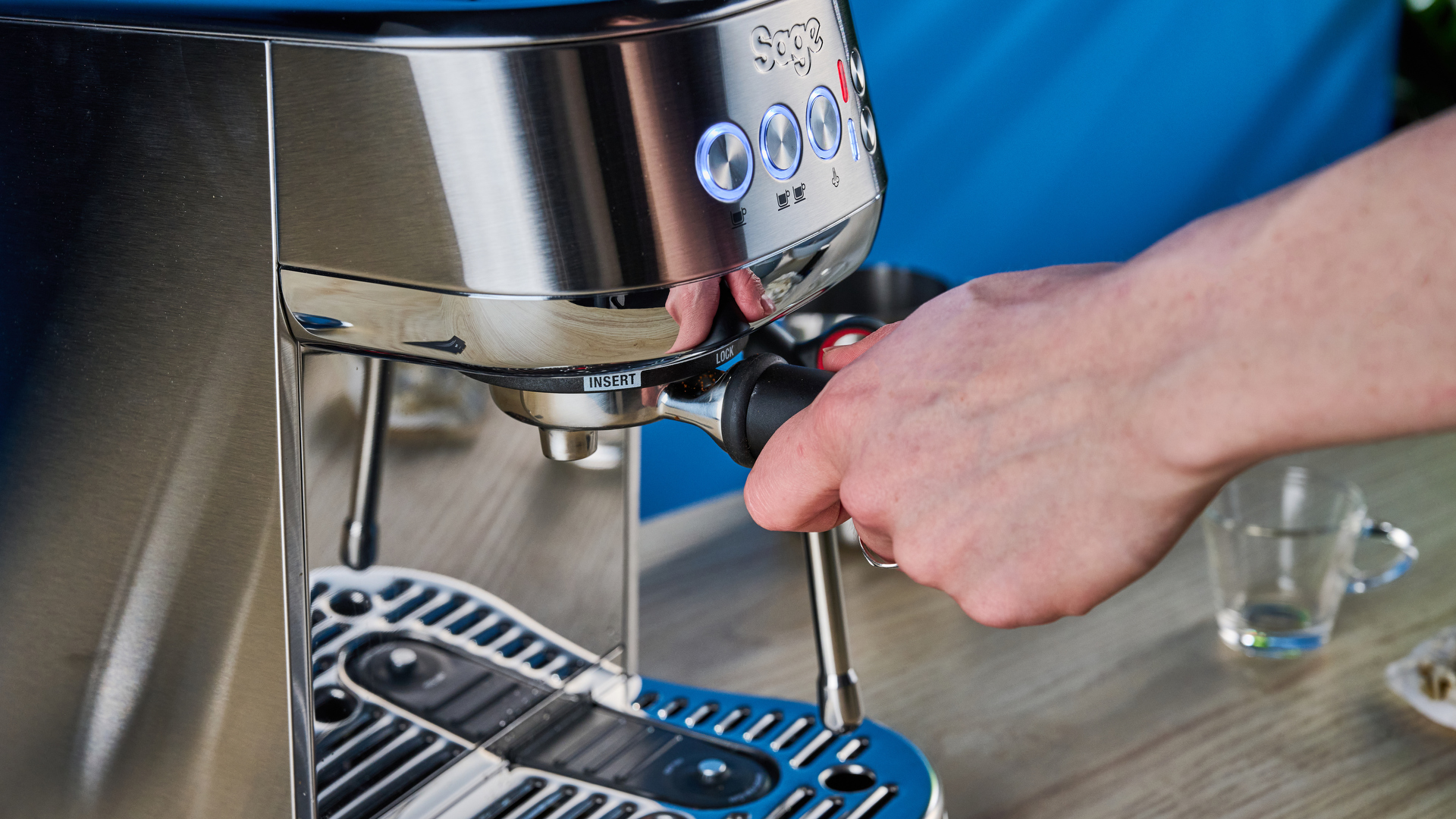
A slightly cheaper alternative is the Diletta Mio, which combines a PID-controller boiler with a thermoblock steam element — the placement of the boiler results in fast heat up, as does the thermoblock steam system, so the Mio combats one of the main issues of dual-boiler machines: their long startup times.
If you’re in-between, then the Breville Barista Express or the De’Longhi La Specialista Opera machines will treat you well. They can both brew delicious, complex, and technically great espresso and steam milk beautifully. They’re just a lot bigger and pricier than the Bambino Plus, naturally.
Breville Bambino Plus review: Verdict
For those looking to get their first proper espresso machine, then the Breville/Sage Bambino Plus is a great option. I have no reservations about recommending this with my full chest. It can brew delicious espresso, steam milk both manually and automatically, and is nicely compact.
However, if you’re a bit of an espresso purist, you will probably want a dual-boiler machine. You’d be better off with something like the aforementioned Smeg EMC02 or even the very expensive Bianca Lelit.
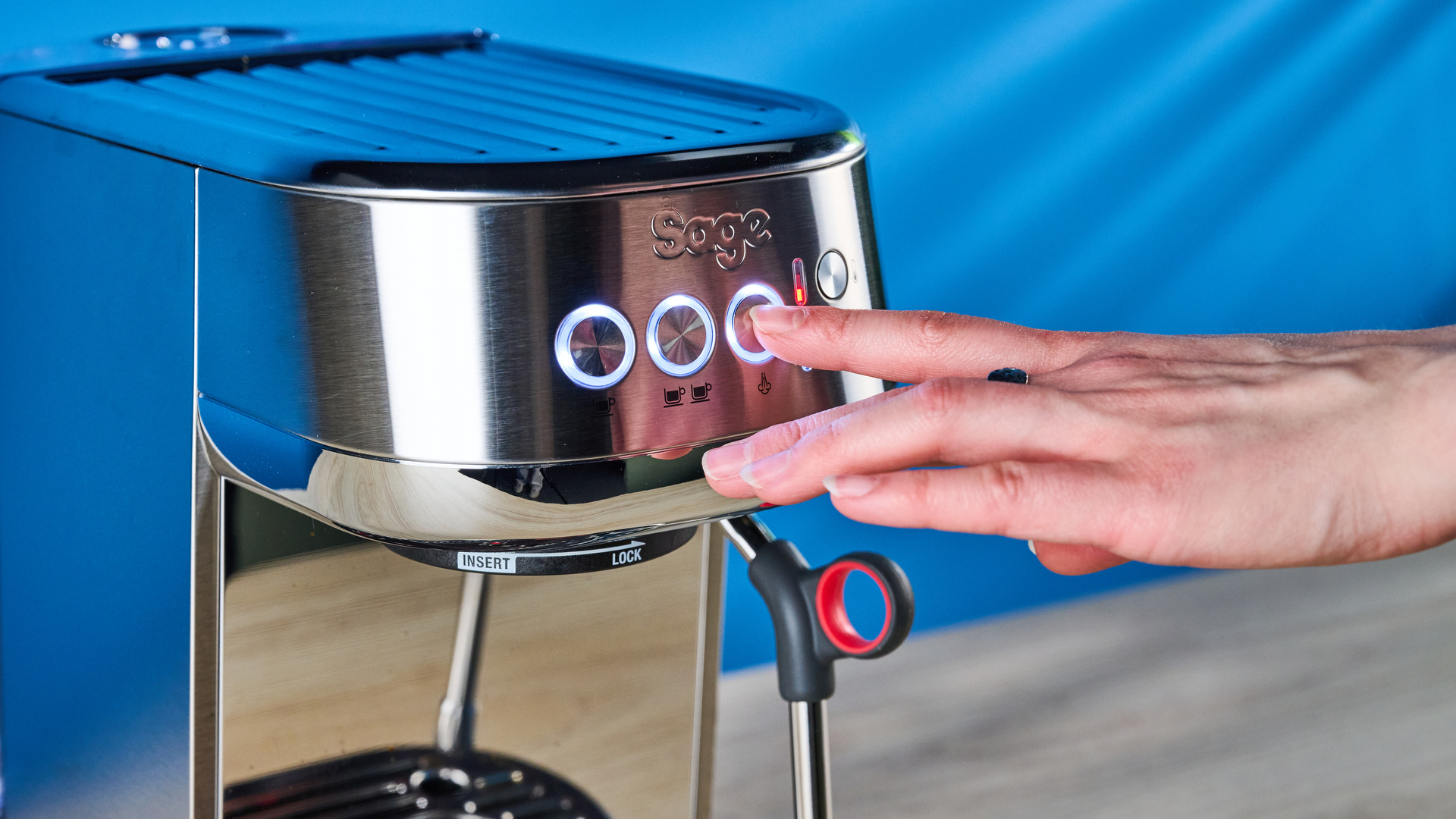
More ‘technically’-superior espresso machines tend to cost upwards of $1,500 (on a good day), though, so are out of reach for a lot of us. In that case, there’s nothing wrong with the Bambino Plus for everyday brewing. I would happily use this as my main espresso machine and have absolutely no regrets. The Bambino Plus is the reigning champ of compact espresso machines for a reason.

Erin Bashford is a senior writer at Tom's Guide, focusing on reviews. She has a Masters in Broadcast and Digital Journalism from the University of East Anglia. As an ex-barista, she knows her way around a coffee machine, and as a music lover, she's constantly chipping away at her dream of having a multi-room home sound system. In her spare time you can find her reading, practising yoga, writing, or stressing over today’s NYT Games.
You must confirm your public display name before commenting
Please logout and then login again, you will then be prompted to enter your display name.
